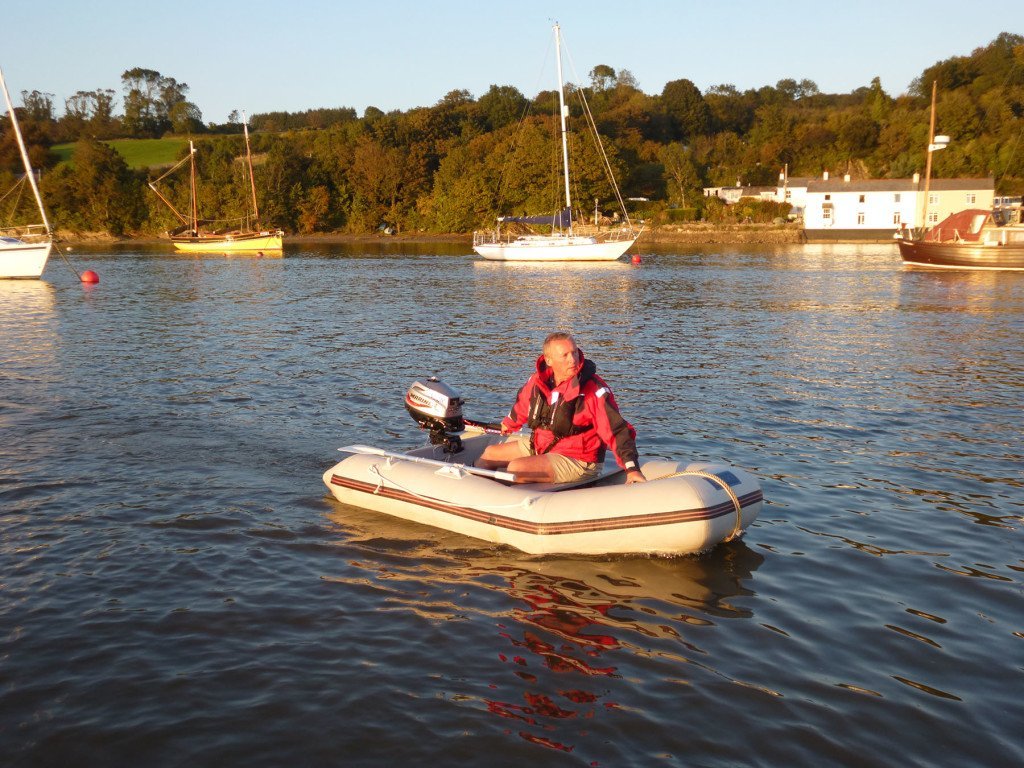Essential yacht tender safety – the dangers inherent in using a dinghy to get ashore from a moored or anchored yacht are all too easily underestimated.
A recent experience caused me to have a serious think about essential yacht tender safety. Recently I faced the prospect of coming ashore from my mooring in the pitch dark, in wet, breezy conditions with a strong tide running, over a distance of about 300 metres. I was by myself and it prompted me to ask myself before setting off whether it would be unsafe to use the tender or should I spend the night on board?
Consider your options
Yes, the driest and safest option would have been to stay on board, but I had my wet weather gear and a lifejacket, I hadn’t been drinking and I was confident that my little Zodiac inflatable was up to the job. OK, if the outboard packed up then it would be a challenging row against the fast running tide. However the tide was coming in so I wouldn’t be swept out to sea and, with wind against tide, there were going to be sharp little waves to contend with.
I decided to go for it and quickly got completely soaked by the spray, as did the gear. Finding my way through the boats on their swinging moorings in the pitch darkness was a challenge. I was greatly reassured to have my truly excellent Exposure Marine X2 torch. I would urge all those who use a tender to buy one – expensive but worth every penny. They are waterproof, lightweight and incredibly powerful.
There are inherent risks in most boating activities and this includes using a yacht tender to get ashore from a mooring or anchorage. After last week’s soaking, I have compiled some hints and tips about essential yacht tender safety – see below.
Essential yacht tender safety :
- Plan ahead and make notes of the tide state and weather forecast for when you set out and expect to return from a trip.
- Wear lifejackets, even for short trips.
- Wear a killcord, even for short trips.
- Carry oars as back up in case the outboard fails.
- Carry a means of communication – mobile phone in a waterproof cover or a handheld VHF.
- Carry a lightweight, powerful, waterproof torch (see above).
- Don’t overload the dinghy – follow the manufacturer’s recommendations.
- Carry a foot pump.
Essential yacht tender safety – other considerations:
- Use bow and stern lines to secure the dinghy alongside – much easier to get on and off.
- Always check you have enough fuel – you can easily be caught out.
- Keep a puncture repair kit ashore and on the yacht – otherwise you can guarantee when you need it it will be in the wrong place.
- Keep spare killcords ashore and on the yacht – they have a habit of disappearing.
- Keep spare valves for tube inflation points.
Essential yacht tender safety – outboard care:
- Make sure your outboard complies with dinghy manufacturer’s recommendations.
- Service the engine every season.
- Attach a lanyard to prevent the outboard going over the side (I didn’t in the past – very costly).
- Flush the engine in fresh water after use in salt water.
- Keep spares including a spare spark plug, shear pins (essential) and kill cord.
Essential yacht tender safety – choosing an inflatable dinghy:
- Storage is a big issue, especially on a yacht. Check weight and dimensions before buying.
- Consider how easy or difficult it will be to lift an inflated dinghy aboard.
- Storage will most likely affect capacity. 2 or 3 person inflatables are usually adequate.
- There are many types to choose from. Check what works best for your yacht.
- Consider different types of floor – slatted or inflated. Solid floors make standing up easier and are better for carrying gear.
- Solid transoms are best for outboards, but bulkier.
- Check the inflatable has well designed oar rowlocks – not all do.
- Hypalon coated tubes are more expensive and better quality than PVC coated nylon.











